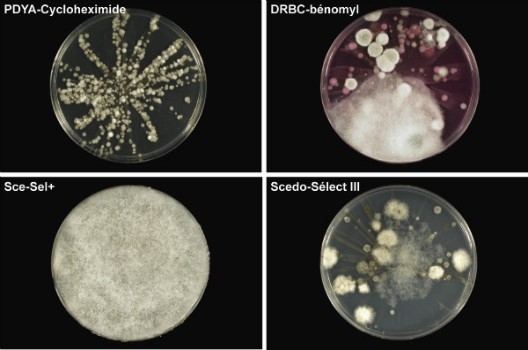- Index
- >Research topics
- >Axis 1 : Clinical-biological monitoring
- >Theme 2: Ecology
Ecology
We are also continuing our work on the ecology of the filamentous fungi responsible for these respiratory infections.
The environmental survey we carried out in the homes of cystic fibrosis patients colonized by S. apiospermum identified potted plants as a reservoir for the fungus and a possible source of contamination for patients.
However, the culture media used at the time lacked selectivity, and other reservoirs of the fungus may not have been detected. This observation led us to recently develop a PCR technique, as well as a highly selective culture medium called Scedo-Select III, methods which will be applied in a new environmental survey in search of other S. apiospermum foci in the home. These methods will also be used to study the airborne dispersal of fungal spores from potted plants. The natural habitat of species of the S. apiospermum complex is also being clarified as part of Abdelmounaim Mouhajir's thesis, but similar questions arise for other fungal species encountered in cystic fibrosis.
As part of the study of community infections, surveys will be carried out in the homes of patients colonized by P. jirovecii to investigate the excretion of the fungus into the domestic environment. The environmental survey will include air sampling using a liquid media impinger. P. jirovecii will be detected by qPCR and genotyped in source lung samples and air samples by multilocus analysis.
|
|



